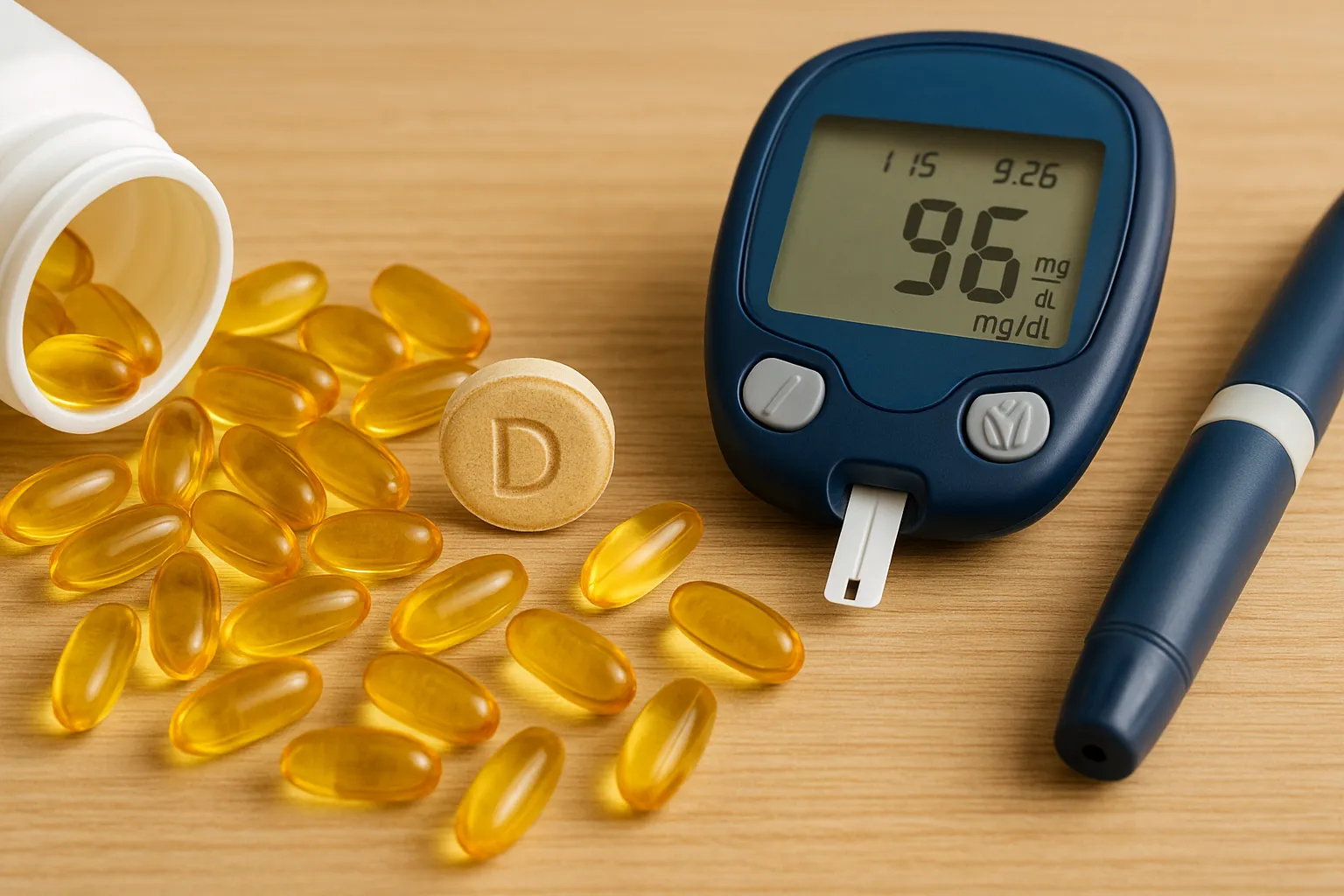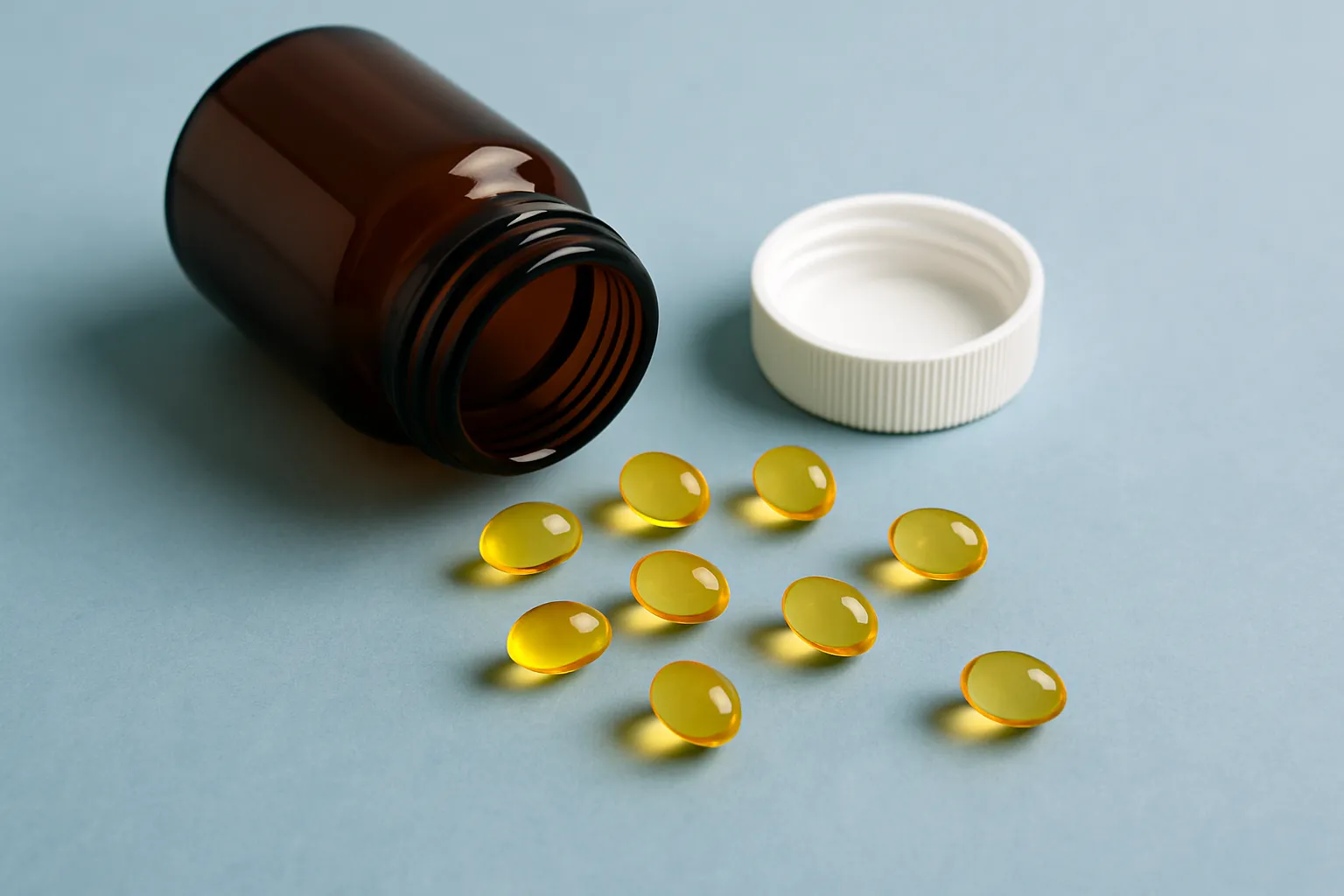
Understanding Vitamin D Daily Needs: Recommendations, Sources, and Benefits
Explore essential vitamin D daily requirements, RDA by age, top sources like sunlight and foods, health benefits, deficiency risks, and supplementation tips for optimal bone and immune health.
What is Vitamin D and Why Does It Matter?
Vitamin D, often referred to as the "sunshine vitamin," plays a crucial role in maintaining overall health. This fat-soluble vitamin is unique because it can be synthesized by the body when exposed to sunlight, in addition to being obtained through diet and supplements. Primarily known for its essential function in calcium absorption and bone health, vitamin D also influences immune function, muscle strength, and even mood regulation. As modern lifestyles often limit sun exposure, understanding daily vitamin D needs has become increasingly important for preventing deficiencies that can lead to serious health issues.
Deficiency in vitamin D is widespread globally, affecting an estimated one billion people. Factors such as indoor living, sunscreen use, darker skin tones, and geographic location contribute to this epidemic. This article delves into the recommended daily intakes, diverse sources, profound benefits, and potential risks associated with inadequate or excessive levels of this vital nutrient.
Recommended Daily Intake: RDA Guidelines by Age Group
The Recommended Dietary Allowance (RDA) for vitamin D is established to ensure sufficient levels for bone health and normal calcium metabolism in nearly all healthy individuals. These guidelines, set by authoritative bodies like the National Institutes of Health (NIH) and the Food and Nutrition Board (FNB), assume minimal sun exposure and are measured in micrograms (mcg) or International Units (IU), where 1 mcg equals 40 IU.
For infants from birth to 12 months, the Adequate Intake (AI) is 10 mcg (400 IU) per day, supporting early bone development and preventing rickets. Children and adults aged 1 to 70 years require 15 mcg (600 IU) daily. Those over 70 years need slightly more—20 mcg (800 IU)—to account for age-related decreases in skin synthesis and absorption efficiency. Pregnant and lactating women maintain the 15 mcg (600 IU) level, though individual needs may vary.
- Birth to 6 months: 10 mcg (400 IU) AI
- 7–12 months: 10 mcg (400 IU) AI
- 1–13 years: 15 mcg (600 IU)
- 14–18 years: 15 mcg (600 IU)
- 19–50 years: 15 mcg (600 IU)
- 51–70 years: 15 mcg (600 IU)
- Over 70 years: 20 mcg (800 IU)
International variations exist; for instance, the UK's National Health Service (NHS) recommends 10 mcg (400 IU) for everyone over 4 years, including during pregnancy and breastfeeding. These recommendations underscore the importance of tailoring intake to life stages, with higher needs in older adults to combat osteoporosis risk.
Sources of Vitamin D: From Sunlight to Supplements
Obtaining vitamin D requires a multifaceted approach, as natural dietary sources are limited. The most effective methods include sunlight exposure, fortified foods, fatty fish, and targeted supplementation.
Sunlight: The Natural Factory
When ultraviolet B (UVB) rays from sunlight hit the skin, they convert 7-dehydrocholesterol into vitamin D3 (cholecalciferol). This process is influenced by factors like time of day, season, latitude, skin pigmentation, and sunscreen use. In temperate regions, adequate synthesis occurs from late spring to early fall with 5–30 minutes of midday exposure to arms, face, and legs, two to three times weekly, without sunscreen. However, in winter months or northern latitudes, sunlight alone is insufficient, prompting reliance on other sources.
Darker skin tones, which contain more melanin, reduce UVB absorption, necessitating longer exposure times. Conversely, excessive sun exposure raises skin cancer risk, so balance is key—use SPF 15+ after initial exposure for protection.
Food Sources: Nutrient-Rich Options
Few foods naturally boast high vitamin D levels, but incorporating them can significantly boost intake. Fatty fish top the list, providing substantial amounts per serving:
- Cod liver oil (1 tablespoon): 34 mcg (1,360 IU)
- Salmon, cooked (3 oz): 14.2 mcg (570 IU)
- Trout, farmed (3 oz): 16.2 mcg (645 IU)
- Tuna, canned (3 oz): 1 mcg (40 IU)
- Sardines, canned (2 pieces): 1.2 mcg (46 IU)
Other natural contributors include egg yolks (1.1 mcg per large egg), beef liver (1 mcg per 3 oz), and certain mushrooms exposed to UV light (up to 9.2 mcg per ½ cup). Fortified foods are a staple in many diets: a cup of 2% milk delivers 2.9 mcg (120 IU), while plant-based alternatives like soy or almond milk offer 2.5–3.6 mcg (100–144 IU) when fortified. Breakfast cereals and orange juice also commonly include added vitamin D.
Vegans may face challenges, as most natural sources are animal-derived, but UV-treated mushrooms and fortified plant products provide viable options.
Supplements: Bridging the Gap
Dietary supplements, available as vitamin D2 (ergocalciferol from plants) or D3 (from animal sources or lichen for vegans), are crucial for those with limited sun or dietary access. D3 is generally more effective at raising and maintaining blood levels. The NHS advises year-round supplementation for at-risk groups, such as housebound individuals, those with dark skin, or children under 5. In the UK, free supplements are available via the Healthy Start scheme for eligible families.
Always consult a healthcare provider before starting supplements, especially if on medications like statins or corticosteroids, which can interact with vitamin D metabolism.
Health Benefits of Adequate Vitamin D Levels
Beyond its foundational role in bone mineralization, vitamin D offers a spectrum of benefits supported by extensive research. It facilitates calcium and phosphate absorption in the intestines, essential for strong bones and teeth, thereby preventing conditions like rickets in children and osteomalacia in adults.
Emerging evidence highlights its immunomodulatory effects, potentially reducing infection risk, including respiratory illnesses. Studies suggest adequate levels may lower autoimmune disease incidence, such as multiple sclerosis. Cardiovascular health benefits include reduced inflammation and improved endothelial function, while links to diabetes prevention involve better insulin sensitivity and glucose metabolism.
Muscle function improves with sufficient vitamin D, decreasing fall risk in the elderly. Mental health correlations show lower depression rates with optimal levels, possibly due to serotonin regulation. Cancer research is promising; lab studies indicate vitamin D inhibits cell proliferation in breast, colon, and prostate cancers, though clinical trials yield mixed results.
Overall, maintaining serum 25-hydroxyvitamin D [25(OH)D] levels above 50 nmol/L (20 ng/mL) supports holistic well-being, with benefits accruing across life spans.
Vitamin D Deficiency: Symptoms, Risks, and At-Risk Groups
Deficiency, defined as serum 25(OH)D below 30 nmol/L (12 ng/mL), manifests subtly at first but can escalate to severe complications. Early symptoms include fatigue, bone pain, muscle weakness, and frequent infections. In children, it causes rickets—soft, deformed bones leading to bowed legs and growth delays. Adults may experience osteomalacia, resulting in chronic aches and fractures.
Long-term risks encompass osteoporosis, heightened fracture susceptibility, and cardiovascular disease. Severe deficiency correlates with increased all-cause mortality, type 2 diabetes, and certain cancers. The resurgence of rickets in industrialized nations underscores the issue's persistence despite fortification efforts.
High-risk populations include:
- Individuals with limited sun exposure (e.g., office workers, northern residents)
- People with darker skin pigmentation
- Obese individuals, as vitamin D sequesters in fat tissue
- Those with malabsorption disorders like celiac or inflammatory bowel disease
- Elderly adults due to reduced synthesis capacity
- Exclusively breastfed infants without supplementation
Testing via a simple blood draw measures 25(OH)D levels; levels between 30–50 nmol/L (12–20 ng/mL) indicate inadequacy, warranting intervention.
Avoiding Toxicity: Upper Limits and Precautions
While deficiency is common, excess vitamin D from over-supplementation can cause hypercalcemia, leading to nausea, vomiting, kidney stones, and cardiac issues. The Tolerable Upper Intake Level (UL) is 100 mcg (4,000 IU) daily for adults and children over 9 years, dropping to 25 mcg (1,000 IU) for infants. Sunlight and food rarely cause toxicity due to natural regulatory mechanisms.
Monitor intake if combining supplements with fortified foods, and seek medical advice for high-dose regimens. Regular blood tests ensure levels stay below 125 nmol/L (50 ng/mL) to avoid adverse effects.
Practical Tips for Meeting Your Daily Needs
Incorporate vitamin D-rich foods into meals: grill salmon twice weekly, add fortified milk to smoothies, or snack on UV-exposed mushrooms. Aim for safe sun sessions during peak UVB hours, but prioritize skin protection. For supplementation, choose D3 for better efficacy, starting at RDA levels unless deficient.
Lifestyle adjustments like weight management and gut health support enhance absorption. Collaborate with healthcare providers for personalized plans, especially during high-need periods like pregnancy or winter.
Conclusion: Empowering Health Through Informed Choices
Meeting vitamin D daily needs is foundational for vitality, from sturdy bones to robust immunity. By understanding RDAs, leveraging diverse sources, and addressing risks proactively, individuals can optimize levels for lifelong wellness. Whether basking in sunlight, savoring fatty fish, or popping a supplement, small, consistent actions yield profound rewards. Consult professionals for tailored guidance, and embrace the sunshine vitamin's full potential.


